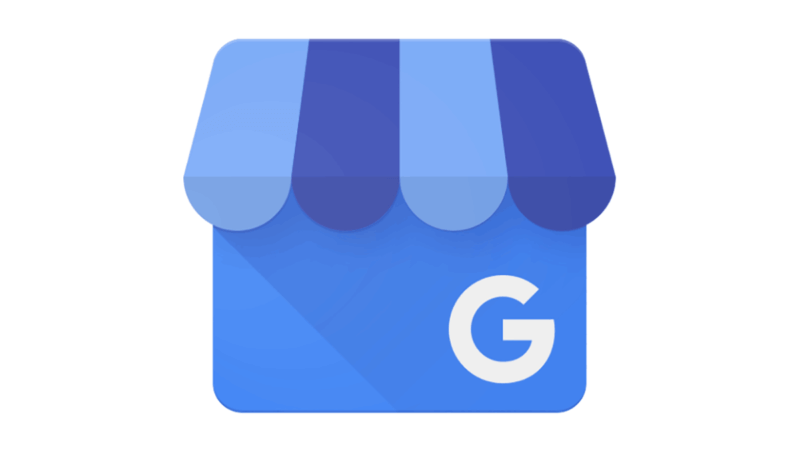How This Self-Taught Developer Built A $492K/Year Reputation Management Platform
Hello! Who are you and what business did you start?
Hi, I’m Vitaly Motuz, the founder and CEO of ReviewsOnMyWebsite - an online reputation management software that helps local businesses collect, monitor, and display online reviews to establish trust and improve brand reputation.
I was born in Ukraine and lived in Israel for a few years before moving to Edmonton, Alberta, Canada, in 2007. After graduating high school, I went to university to study mechanical engineering. However, after completing three years at school, I was placed on academic dismissal due to a low GPA.
At the time, I was already proficient at coding and was preoccupied with earning money from a few business owners paying me to maintain their websites. So, instead of reapplying and finishing my last year, I continued building my career. In 2011, after some initial interviews, I landed my first full-time job as a developer at a start-up digital publishing company.
A few years later, in 2017, while working full-time as a developer, I started ReviewsOnMyWebsite as a side project. I was 27 years old at the time and was helping a friend with her website.
Within the first week of launching, I got my first two paying customers! Three years later, I decided to leave my day job and focus on growing ReviewsOnMyWebsite full-time.
Today, ReviewsOnMyWebsite has helped over 35,000 businesses convert more leads by simplifying the process of collecting feedback and displaying customer reviews.

What's your backstory and how did you come up with the idea?
ReviewsOnMyWebsite started as a simple Google reviews widget to help small businesses showcase their Google reviews directly on their website. The idea for the company came to me while I was trying to help a friend market her accounting firm online. At the time, her accounting firm had a few dozen reviews and almost a 5-star average rating on Google.
Knowing this and understanding the basics of digital marketing, I knew that the more website visitors could see those positive reviews from past clients, the higher likelihood they would want to become clients themselves. Social proof and finding ways to build trust online was already a growing industry, and I knew if we could tap into that for my friend, we’d be able to find success.
I started researching ways to embed Google reviews onto my friend’s website, and to my surprise, I couldn’t find an easy way to do that. And some of the methods I found online were outdated or no longer supported.
This was when I realized I might be onto something valuable. Like my friend’s accounting firm, I knew thousands of other businesses could benefit from having such a widget on their website to help convert more visitors into paying customers.
I’m a self-taught developer and had already built many websites before ReviewsOnMyWebsite, hoping to monetize them someday. However, only some of those projects were successful because although I enjoyed creating them, I would quickly lose interest when it was time to market them and take those next steps.
Having learned this about myself, I decided to take a different approach and hired a developer on Upwork to build the MVP version of a Google reviews widget.
I thought outsourcing the software development would force me to focus on marketing and help me feel more invested in the business since I was now paying someone to build it from scratch. This approach also worked well with my schedule since I was still working full-time at the digital publishing company. Building the software would have taken quite a bit more time, significantly delaying the launch date.
Take us through the process of building the first version of your product.
I opted to have the software built on PHP since that’s what I was familiar with, and the developer I hired suggested we use Laravel, a PHP framework, to help speed up the development process. I only focused on the must-have functionalities at the beginning since I was personally financing the development of the software.
I also opted for free options for developing the rest of the business wherever possible. Examples of this were designing the logo myself using a free online logo editor, purchasing and customizing a website template from ThemeForest instead of hiring a designer, and opting for a free version of a 3rd party software for marketing automation and emails.

One of the most challenging parts of developing ReviewsOnMyWebsite was the brand name. It had taken me quite a bit of time to come up with a name that I liked with a .com domain available, but all the options I looked at were either already taken or sold for a few thousand dollars.
At the time, I couldn’t justify spending that much on a domain for a site without revenue. So one night, I just asked myself what the central problem the software was going to solve was, and that’s how I came up with “ReviewsOnMyWebsite.”
Simply put, the software was built to help businesses display online reviews on their website.
The initial version of the software took about five weeks to build and cost around $2,500. It aggregated Google and Facebook reviews into a user’s dashboard and provided them with an embeddable widget to display those reviews anywhere on their website.
In addition, the widget had several settings that could be customized from within the dashboard, such as the number of reviews to display and the choice of layout that included a list or slider view with the option to change the font style and color.

The most significant appeal of the software was that whenever a business would receive a new review on Google or Facebook, our software would automatically import the review into their ReviewsOnMyWebsite dashboard. It would then be displayed directly on their website without them having to update the widget each time manually they received a new review. This way, the business would always have the latest social proof, which helped them convert more leads into paying customers.
Describe the process of launching the business.
Stay at your current job as long as you can, and focus on building your business on the side until it generates enough revenue to cover your expenses.
The first version of ReviewsOnMyWebsite included a free plan and two paid plans priced at $5 and $15 per month. I offered a free program to encourage as many users to sign up to help test the software and collect user feedback.
I firmly believe in making business decisions based on data, so I ensured we had some basic tracking set up from the beginning to help track how users interact with the software and what settings they use the most. I also set up a support widget within the app to make it easy for anyone to contact us if they had any questions or feature requests or wanted to report a problem.

The first thing after the website went live was to compile a list of blog posts containing methods for embedding Google reviews on a website.
As most methods were outdated and no longer worked, I noticed many visitors to those blogs were posting comments asking for working solutions or other options. This was a perfect opportunity to provide these commenters with a working solution, so I manually responded to the comments suggesting they check out ReviewsOnMyWebsite.
I would also contact the blog post authors and ask if they could mention our service and backlink to our website from their post, considering the methods they had outlined were no longer working.
A few authors agreed to add a link to ReviewsOnMyWebsite to their blog posts, which helped us get some initial traction and obtain the first couple of paying clients. And just like that, I had my first two conversions within the first week of launching the website.
Since launch, what has worked to attract and retain customers?
One of the most significant advantages of creating a widget to be embedded on other websites is the ability to include a branded "powered by" link to help promote the software. For example, we had the "powered by ReviewsOnMyWebsite" link at the bottom of all our reviews widgets for users on the free plan, which they could remove if they upgraded to a paid plan.
This helped us generate new traffic and backlinks early on, creating a snowball effect, which led to us ranking higher in search engines. To this day, this is one of our largest traffic sources for new leads. As more and more businesses use our review widgets and rating badges on their website, it continues to help us gain even more exposure.
The second most consistent source of traffic has been organic search. In the beginning, I wrote a few dozen "how-to" guides for popular search queries, like how to embed Google reviews on a website that I would find using Google Keyword Planner.
At the time, there was little competition in the market, so those posts ranked on the first page of Google relatively fast and helped generate a lot of organic traffic for the website. Fast forward to today, I now have a writer to create those guides and blog posts, which we continue to produce today.
In the last year, we started experimenting with paid ads on Google. We did not begin ads sooner because our most popular plan cost $9/month, and it would have taken us close to a year to break even. In the first few years of running the business, I couldn’t justify waiting that long to have a positive ROI and instead opted to reinvest all the revenue into building a better product.
Now that we have expanded our software beyond review widgets into a full-fledged reputation management solution that lets businesses not only display reviews but also gather reviews and feedback from their customers, we can afford to focus more of the revenue on marketing and acquiring new leads.
How are you doing today and what does the future look like?
Today, the company is generating around $41K MRR, with the goal of doubling this number and making it a $1M ARR company within the following year.
My vision for the business is to create the best all-in-one reputation management solution that is not only easy to use but affordable since many of the other competitors on the market charge 2-6x more, which can be a hefty investment for some of the smaller businesses looking for online reputation and review management.
Our team consists of myself and five part-time contractors, including a developer, designer, digital marketer, product manager, and customer support. I’ve been doing my best to outsource as many day-to-day tasks as possible to free up more of my time, so I can continue focusing on the big-picture growth initiatives.
In the past year, we’ve double-downed on the content strategy and partnered with an SEO agency to help us make the best of our content going forward. I’m also very optimistic about the possibilities that paid media will help unlock, given that it’s a relatively new area for us with a wide range of opportunities to reach a wider audience.
In addition to focusing on acquiring customers directly to our business, we have recently introduced a white-label plan for agencies and resellers that would like to offer their clients white-label reputation management software. This plan lets agencies add their custom domain, customize the dashboard with their branding, and resell our software to their clients at scale.
Through starting the business, have you learned anything particularly helpful or advantageous?
I believe one of the reasons that the business has been so successful and continues to grow is that I built it while trying to solve my problem of finding a way to easily display reviews on a website.
So instead of developing a product and then trying to find a product-market fit, I discovered a problem and built the product to solve it.
I also was fortunate with the timing, as only a few review widgets were available on the market a few years ago. This allowed me to fill an immediate need and grow quickly.
For the first year of running the business, I was the only one providing customer support and answering all user questions, which sometimes would take up to an hour a day.
While it might not seem like the best use of my time now, it was a crucial step at the beginning stages of the business since it helped me better understand our users’ needs and, in turn, build a better product that helped them solve their problems in the most efficient way possible.
What platform/tools do you use for your business?
We use Drip for marketing automation and Mailgun for transactional emails, such as notifying customers when they receive a new review. For customer support, we use Help Scout, and for all internal communications with the team, we use Slack. Basecamp and Jira are used for project and task management, while Google Workspace is used for internal emails, meetings, strategy, planning, and deliverables.
Most of the contractors I’ve worked with have been found on Upwork, although finding reliable and high-quality people to work with at a lower rate can sometimes be challenging. I generally prioritize quality over price and, as such, have been investing in top-tier talent since the ROI speaks for itself and I believe you get what you pay for.
What have been the most influential books, podcasts, or other resources?
- Rich Dad Poor Dad - this is the first business book I read. I was 14 at the time, and it completely transformed my thoughts about money. It was then that I knew that I wanted to run my own business and be free to work from anywhere on my terms.
- Built to Sell - helped me better understand how to build a business and position it to sell one day. Lots of valuable insight on how to structure a company so it can operate without your daily involvement and make it more attractive to potential buyers.
- Rework - written by the founders of Basecamp, the book contains lots of great advice on productivity, focusing on the essentials and building a successful business without compromising other areas of your life.
Advice for other entrepreneurs who want to get started or are just starting out?
You don't need to be a workaholic, rent an office, create a business plan, hire an entire team, or sacrifice your day job to get started. Most of the time, those are all just excuses for not getting started.
My advice is to start working on your idea and adjust as you go. Stay at your current job as long as you can, and focus on building your business on the side until it generates enough revenue to cover your expenses.
You don't need to reinvent the wheel and spend a lot of money to build a successful business. Instead, find an existing problem and create a slightly better solution than everybody else in your market is offering. Then, find your unique selling proposition (USP) and build off of that.
It doesn't have to be perfect; sometimes, it can just be good enough. This is something I still remind myself of regularly. I'm a perfectionist and like to have things done as close to perfect as possible.
However, sometimes it's more beneficial to just get things out there and improve over time rather than waiting longer for something to be perfect before launching it. So, get your idea out there as soon as possible and use data and real feedback from your users to help you make decisions and continue to grow.
Are you looking to hire for certain positions right now?
We’re looking for a marketing or sales professional with experience in SaaS sales and direct/cold outreach via email and LinkedIn. Message me on LinkedIn if interested in learning more.
Where can we go to learn more?
If you have any questions or comments, drop a comment below!

Download the report and join our email newsletter packed with business ideas and money-making opportunities, backed by real-life case studies.

Download the report and join our email newsletter packed with business ideas and money-making opportunities, backed by real-life case studies.

Download the report and join our email newsletter packed with business ideas and money-making opportunities, backed by real-life case studies.

Download the report and join our email newsletter packed with business ideas and money-making opportunities, backed by real-life case studies.

Download the report and join our email newsletter packed with business ideas and money-making opportunities, backed by real-life case studies.

Download the report and join our email newsletter packed with business ideas and money-making opportunities, backed by real-life case studies.

Download the report and join our email newsletter packed with business ideas and money-making opportunities, backed by real-life case studies.

Download the report and join our email newsletter packed with business ideas and money-making opportunities, backed by real-life case studies.























